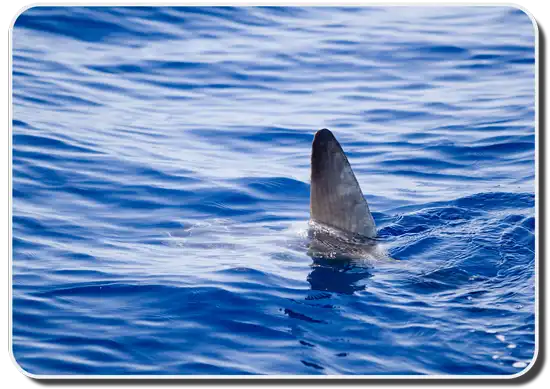
All shark species are pretty unusual. They are the only species on the planet with a skeleton made of cartilage, they can regrow their teeth, and their skin is covered with tiny denticles instead of scales. However within the 440 different species of sharks on the planet, there are some that have developed some pretty unique evolutionary adaptations. Between the pressures of a harsh environment and specialized food sources, some sharks are pretty bizarre. Here is a list of the ten most bizarre sharks on the planet:
1. Frill Shark
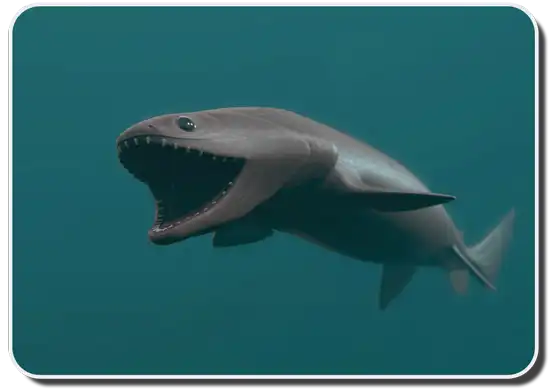
Once thought extinct, this prehistoric shark was caught on video in 2007 for the first time. Frill Sharks are rarely seen by man because they tend to live at depths of 5,150 ft (1,570). What makes frill sharks very bizarre is that they have not evolved past the physical characteristics of prehistoric sharks from 350 million years ago. They have long, eel-like bodies, frills along the edges of their gills, and their teeth grow in vertical rows. In fact, Frill Sharks are so bizarre they might be the origin of human myths about sea serpents.
2. Goblin Shark
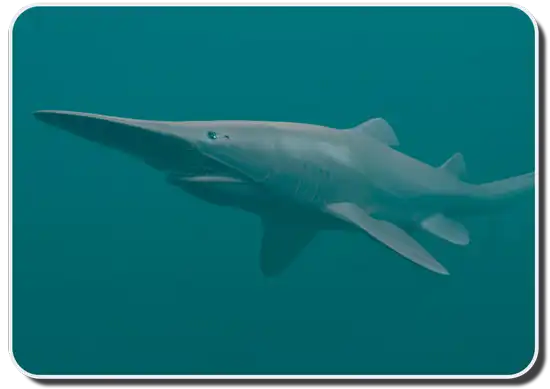
Like the Frill Shark, the Goblin Shark is another prehistoric creature roaming our deep seas. The shark with long nose ‘Goblin Sharks’ are the oldest shark species on the planet, dating back to 125 million years ago. They are rarely seen by humans and mostly just around Japan. Goblin Sharks are incredibly bizarre-looking. First of all they have an extremely long snout that looks like a nose and they have round, fatty bodies, which makes them resemble a goblin. However the weirdest part of their biology is how far their jaw can jut out to grab food.
3. Sawshark
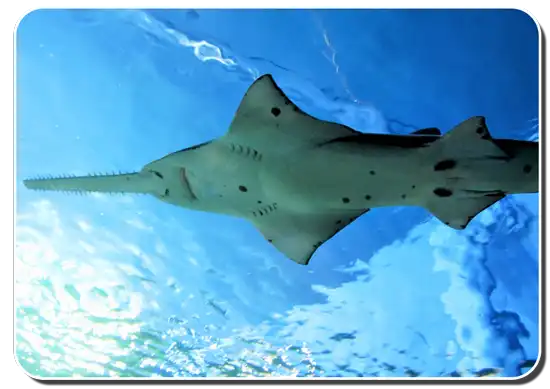
There are six species of Sawshark on the planet. Though each species varies in physical characteristics, habitat, and biology, they all share one unique feature. All Sawsharks have a long snout lined with teeth that looks like a long saw. They use this snout to dig up crustaceans hidden below the surface of the sand. They also use it for self-defense against other predatory sharks. Sawfish can also swim in fresh and brackish waters, making them a really unique species.
4. Australian Ghost Shark
Also known as the Elephant Shark, the Australian Ghost Shark is a small species of shark growing to only 4 ft (1.2 m) in length. They are found along the Southern waters of the Australian continent. These sharks have odd shaped, spotted bodies with spiked dorsal fins. What makes the Australian Ghost Shark truly bizarre is it’s floppy, trunk-like snout. This strange snout is used like a sensory organ to scan the seafloor for potential food. Even more bizarre, is that scientists have discovered humans are more closely related to Australian Ghost Sharks than any other sharks.
5. Wobbegong
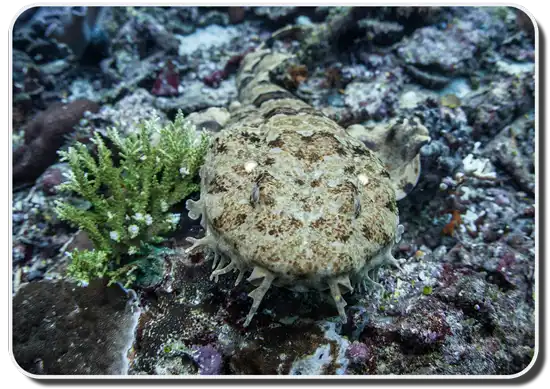
Wobbegongs are a really bizarre looking shark. They look like a mix between a Persian rug and a Catfish. Wobbegongs have really complex skin patterning that acts as camouflage. They are ambush predators that lie patiently hidden along the sea floor. Their short, blunt snout is lined with whiskers that act as sensory organ to detect movement in the water to help find prey. Their bodies are also very flat and they more closely resemble rays than most sharks.
6. Dwarf Lantern Shark
The Dwarf Lantern Shark is a recently discovered species of deep sea shark. It is a small shark of only 8.3 in (21.2 in) length that lives in the continental shelf off the coast of Colombia. The Dwarf Lantern Shark has evolved a pretty amazing evolutionary adaptation to deal with its deep water habitat: It is covered with bioluminescent organs, which means it glows in the dark like a lantern. These bioluminescent organs are used as a way to attract and trap prey.
7. Hammerhead Shark
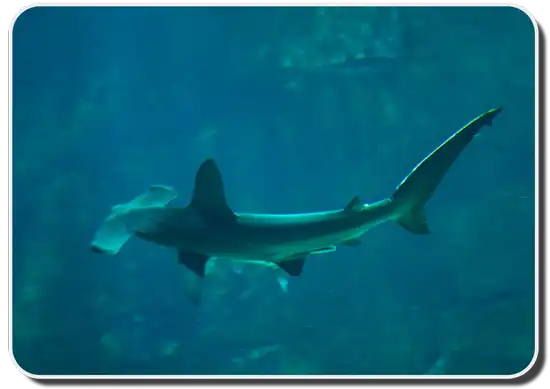
Hammerhead Sharks are a pretty well-known species of shark. Their famous flat heads make them look like a hammer. Scientists believed that Hammerhead Sharks evolved their head as a way to improve their vision. With their eyes mounted perfectly on the ends, Hammerhead Sharks can see a full 360 around them. Their unique head also helps them hunt by making them more agile than other sharks by giving them the ability to make sharp turns in close surroundings.
8. Megamouth Shark
Megamouth Sharks are part of the bizarre line of filter-feeder sharks. There are only three filter-feeding sharks but they are all extremely large and unlike their predatory cousins, they feast only on zooplankton. The Megamouth Shark is probably the most bizarre of the three sharks. Discovered only in 1976, the Megamouth Shark is a deep ocean shark that grows to a maximum 16 ft (5 m). It’s massive mouth measures at 3.5 feet (1 m) when open, making it about one third the size of it’s body. This massive mouth is where the shark got its name.
9. Horn Shark
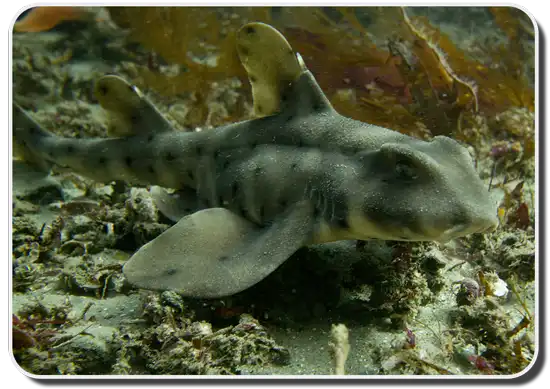
The Horn Shark is a very small species of shark growing to only 3.3 ft (1 m) in length at maturity. Horn Sharks have spotted coloration to help them hide along the sand while they hunt for prey. Horn Sharks have very large fins and square snouts. Horn Sharks are a weird looking shark, but what makes them very bizarre is that they are venomous. Their tall dorsal fins have a long spike that can inject poison into any predator that tries to come across it. Horn Sharks are the only known venomous sharks on the planet.
10. Cookiecutter Shark
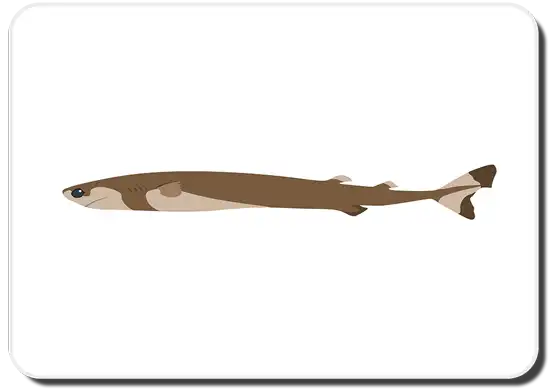 Lastly, and certainly one of the most bizarre, is the Cookiecutter Shark. Cookiecutter Sharks are also called Cigar Sharks because they are long, thing and brown. They are a small shark, reaching a maximum length of 22 in (56 cm). They are not particularly bizarre looking, however their hunting is really unique. Cookiecutter Sharks hunt prey much larger than themselves, though they don’t kill the prey. Instead, they just use their specialized jaws to cut out a round plug of flesh to eat. So they are pretty tough for being so small.
Lastly, and certainly one of the most bizarre, is the Cookiecutter Shark. Cookiecutter Sharks are also called Cigar Sharks because they are long, thing and brown. They are a small shark, reaching a maximum length of 22 in (56 cm). They are not particularly bizarre looking, however their hunting is really unique. Cookiecutter Sharks hunt prey much larger than themselves, though they don’t kill the prey. Instead, they just use their specialized jaws to cut out a round plug of flesh to eat. So they are pretty tough for being so small.
All sharks species are pretty unique, however some species have developed really unique evolutionary adaptations. These sharks have specialized biological traits to help them thrive in their habitat. However, some of these adaptations, though smart, are truly bizarre.
